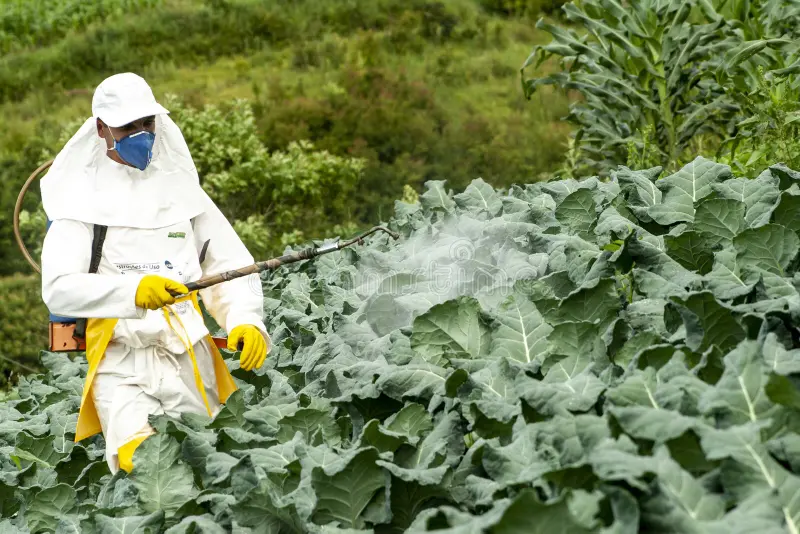Crop Protection Chemicals Market Growth Fueled by Rising Food Security Concerns and Climate Change Challenges

The crop protection chemicals market is experiencing a notable surge in growth, largely driven by two pressing global challenges: the increasing demand for food security and the escalating impact of climate change on agriculture. These twin forces are reshaping farming practices, intensifying the need for resilient crop protection strategies, and encouraging both innovation and expansion within the agrochemical industry.
Feeding a Growing Population
At the heart of the market’s expansion lies a simple yet daunting reality: the world’s population is growing, and so is the demand for food. By 2050, the global population is expected to exceed 9 billion, requiring a dramatic increase in agricultural output without a corresponding increase in arable land. This has placed immense pressure on farmers to boost productivity and reduce crop losses due to pests, diseases, and weeds.
Crop protection chemicals—such as herbicides, fungicides, and insecticides—are essential tools in meeting this challenge. They help farmers maintain crop health, prevent yield loss, and ensure a stable food supply. In regions prone to food insecurity, effective crop protection can mean the difference between a successful harvest and a food crisis. As a result, governments and development agencies are increasingly supporting access to agrochemicals as part of food security initiatives.
Climate Change Disrupting Agricultural Stability
Climate change is adding complexity to an already challenging agricultural landscape. Rising temperatures, shifting rainfall patterns, prolonged droughts, and extreme weather events are affecting not only crop yields but also pest and disease dynamics. New threats are emerging in areas where they were previously uncommon, and existing pests are becoming more resilient.
This shifting environmental backdrop is increasing the demand for advanced crop protection solutions that can perform under unpredictable conditions. Farmers are turning to more robust formulations, faster-acting compounds, and products with broader pest-control spectra. In response, agrochemical companies are accelerating research into climate-resilient chemicals that can adapt to varying weather and soil conditions.
Moreover, the unpredictability caused by climate change often shortens ideal application windows. This creates a need for products that are not only effective but also fast-acting and long-lasting, allowing farmers to protect their crops even under time constraints.
Innovations Addressing Emerging Threats
To keep up with rising demand and new challenges, the industry is doubling down on innovation. There’s growing investment in precision-targeted solutions, advanced delivery systems, and multi-action formulations designed to combat multiple threats simultaneously.
In addition, biotechnology and chemistry are converging to develop smarter crop protection products. Some of the most promising innovations include encapsulated active ingredients for controlled release, nanotechnology for improved absorption, and AI-driven tools to predict pest outbreaks and recommend treatments in real time.
These developments are particularly valuable in the face of climate-driven volatility, where pest populations can spike unexpectedly and threaten entire harvests.
Market Expansion in Emerging Economies
Emerging markets are becoming major growth zones for crop protection chemicals. Regions like Africa, Southeast Asia, and Latin America are investing heavily in agricultural modernization to improve food self-sufficiency and combat the effects of climate instability. As access to improved seeds, fertilizers, and farming equipment grows, so does the adoption of crop protection products.
Additionally, rural education and farmer outreach programs are helping promote the responsible use of agrochemicals, making these products more accessible and acceptable in previously underserved markets.
Regulatory Balancing Act
Despite the urgent need for increased production, regulatory authorities around the world are maintaining a tight focus on environmental safety and public health. This has created a delicate balancing act for manufacturers: developing products that are both highly effective and compliant with increasingly strict environmental standards.
Companies that succeed are those that can align their products with the dual goals of productivity and sustainability, gaining favor with both regulators and environmentally conscious consumers.
The Road Ahead
The crop protection chemicals market is uniquely positioned at the intersection of agriculture, technology, and environmental science. Fueled by rising food security concerns and the ever-growing challenges posed by climate change, the demand for innovative, effective, and sustainable pest control solutions is stronger than ever.
Looking forward, the industry’s growth will be shaped by its ability to adapt—developing tools that are not only powerful in the field but also responsible for the planet. For companies and stakeholders involved, the future holds immense potential, provided they remain responsive, resilient, and forward-thinking in a world that demands more food from fewer resources under increasingly unpredictable conditions.
- Art
- Causes
- Crafts
- Dance
- Drinks
- Film
- Fitness
- Food
- Jeux
- Gardening
- Health
- Domicile
- Literature
- Music
- Networking
- Autre
- Party
- Religion
- Shopping
- Sports
- Theater
- Wellness


